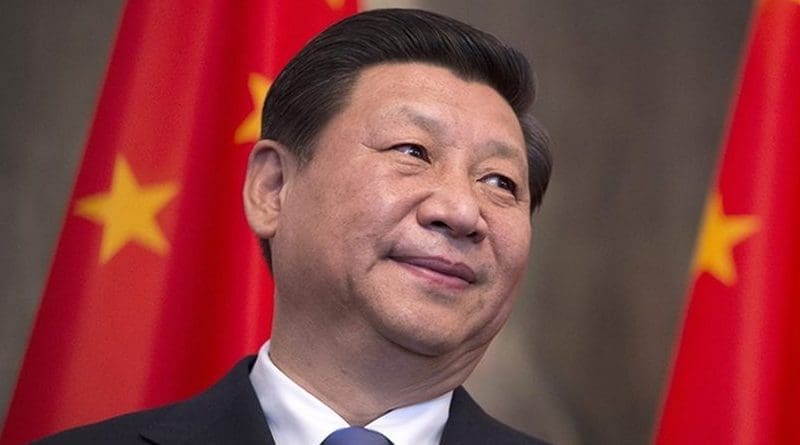The Resurrection Of Xi ‘Zedong’ – Analysis
By IPCS
By Vijay Shankar*
In 1981, five years after Mao Zedong’s death, China adopted an official verdict on his life. It called Mao a great revolutionary whose contributions outweighed the cost of his mistakes (Zhisui Li). Literature and history of later years have, however, suggested otherwise. Mao, through his purges, social upheavals, and programmes—during the “Great Leap Forward” and the “Cultural Revolution”—has been said to be directly responsible for the death of 45 million people. The Cultural Revolution accounted for up to 20 million deaths by some estimates.
The consequences of the two ill-advised policies was a total collapse of the economy that threw China back to primal conditions, socio-political anarchy, massacres, and famines. These tragic episodes hardly qualify as light blunders. By the same logic that puts in balance contributions against mistakes, mankind could possibly take an alternate view of the Hitlers of this world! If at all there is a truism revealed, it is how excessive power drives its wielder into an illusory world where grand visions lead to grander outrages.
Nearly forty years later, another event of great geopolitical significance passed into Chinese history, endorsed by China’s rubber stamp lawmakers. The constitutional provision that limited the president’s tenure to two five-year terms was abolished to paved the way for Xi Jinping to be anointed president for life. He also became general secretary of the Chinese Communist Party (CCP) and chairman of the Central Military Commission (CMC) for life.
The tenure system was created by Mao’s successor, Deng Xiaoping, to prevent an encore of the excesses of Mao’s rule. The aim was to promote institutionalised collective leadership and peaceful transitions of power. Both of Deng’s successors, Jiang Zemin and Hu Jintao, were leaders who stayed the course of collective leadership. They further propagated Deng’s dictum: “hide your strength and bide your time.” The tenure arrangement paid off, at least until 2012, when Xi assumed office.
The international community has noted how China’s posture has been turned on its head since the Deng days. Gone is the maxim, ‘hide strength, bide time, maintain a low profile, and abjure leadership’. Xi, in his own words, has sought to strengthen the party’s control over a modernising society, restore China to what he considers its rightful place as a global power, and, indeed, rejuvenate the nation. Further, “Xi Jinping’s Thought on Socialism with Chinese Characteristics for a New Era” was, in imperial fashion, added to the preamble of the Constitution.
Xi’s message resonates with many urban entrepreneurs in China. The central theme is the promise of national glory; bound to the nation upholding his absolute leadership even while promising that people will run the country. It is never clear whether his constituency is the worker and the peasant (which it certainly appears not to be), or the urban Chinese.
How has Xi’s doctrine played out? He has initiated military measures to persist with claims within the ‘nine-dash line’ in the South China Sea (SCS), precipitate a territorial embroilment with India, begun a global infrastructure plan called the Belt and Road Initiative (BRI), drastically reorganised and modernised the military, increased domestic security, and enforced ideological purity in schools and the media. These are all part of his vision of a rejuvenated China on the world stage that stays faithful to its Communist and Confucian root.
Xi’s hold on power is now implicit. Even the big question of how he chooses to wield it is becoming apparent. In the SCS, claims defined by the ‘nine-dash line’ were judicially de-bunked by an international tribunal at The Hague in 2016. Historically, the claim’s ancestry has been discredited by the fact that Zheng He’s seventh and final voyage ended in 1433. Significant as they must have been, all Chinese maritime activity in the region was thereafter banned by royal edict. Yet, Xi has ordained ownership of 3.6 million sq km of the SCS, and has shown no qualms of using military power to make fast his hold.
In Ladakh, ever since the Doklam crisis of 2017, three factors would appear to have played on Beijing planners. First, the growing pugnacity of the Quadrilateral Security Dialogue (Quad) and its coalescing of SCS littorals. The hindrance that the Quad’s intrusive presence poses to BRI’s maritime segment must cause some misgivings.
Second, the rapid pace of long-neglected infrastructure development and Indian military build-up along the Line of Actual Control (LAC) in Ladakh and Arunachal Pradesh is an augury of response to any military misadventure.
Third, the BRI is critical to the generation of a Sino-centric global order. India’s steadfast rejection of the continental segment on grounds of sovereignty infractions undermines the very idea. The three seen together have no doubt driven Beijing to use their military to test India’s resolve.
Can a favourable presumption be made with regard to Xi’s motives? That, in fact, total power in his hands may be for China’s good? The turbulence in the SCS, brinkmanship in Taiwan and Ladakh, strife in Hong Kong and Tibet, intentions to revise global governance, Uighur atrocities, illicit trade practices, a cavalier approach to international conventions, and an illusory security architecture predicated on a “community with a shared future” are all disconcerting. They suggest anything but favourable assumptions about intent.
Xi may well be mulling over his next power play: whether to falsify geography, misrepresent history, devise another debt-to-lease mercantile trap, trample over one more international convention, or even initiate a hot engagement. To paraphrase Orwell as advice: states, like human minds, cannot so easily be torn to pieces and put back together again in new shapes of your own choosing.
*Vice Admiral (Retd) Vijay Shankar is Distinguished Fellow, IPCS, and former Commander-in-Chief, Strategic Forces Command of India.

